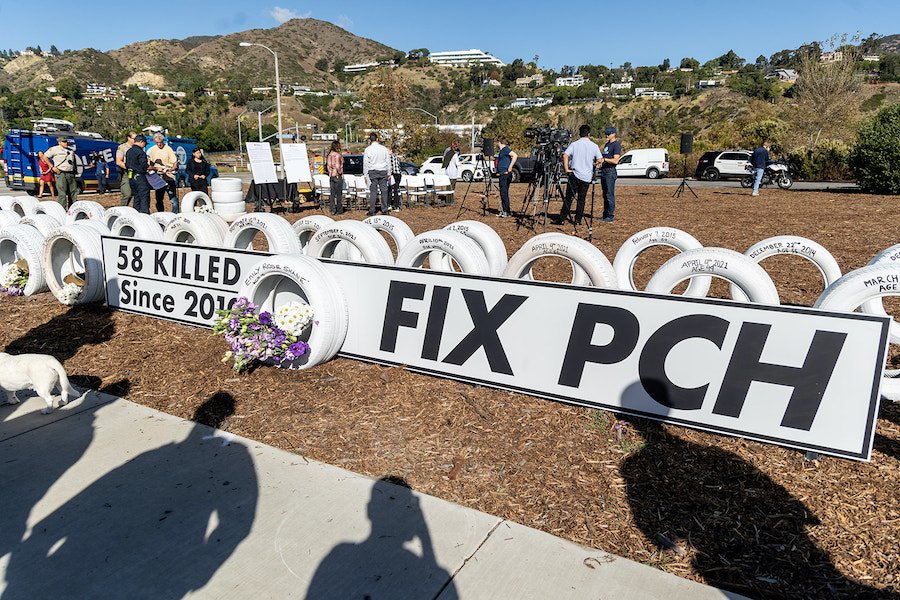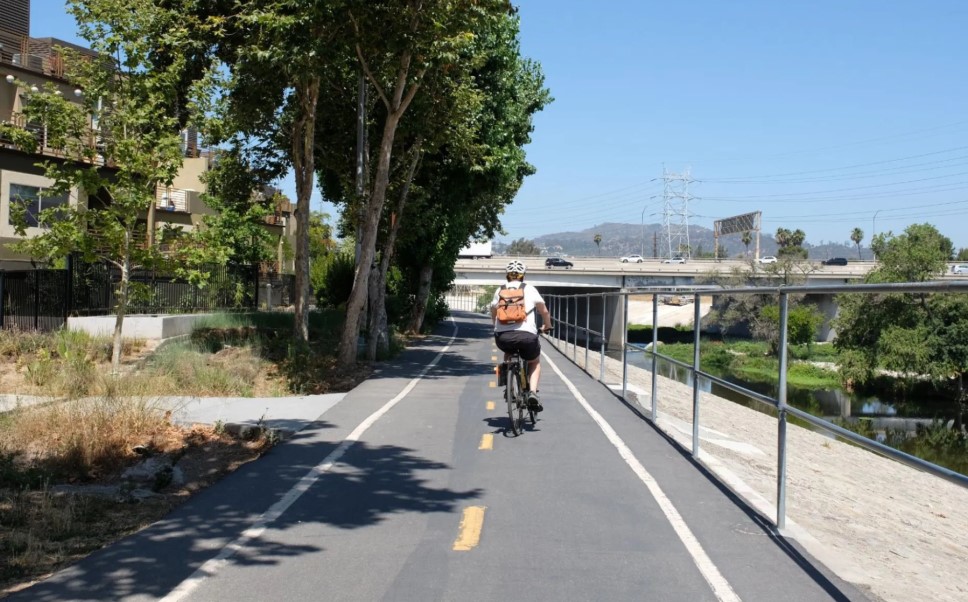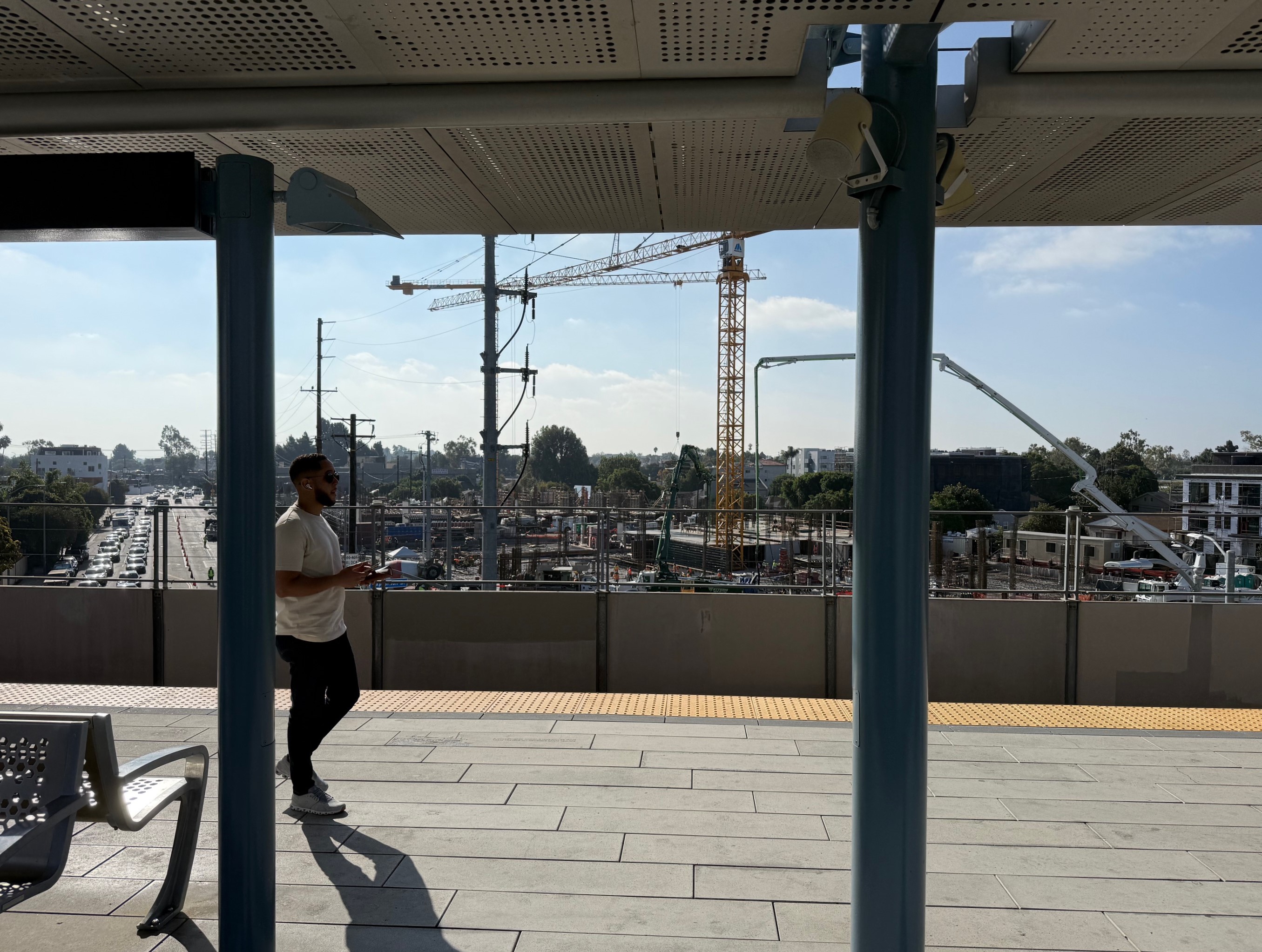Last week, battle lines were drawn between the City of Beverly Hills, the Beverly Hills Unified School District and Metro over the location and routing of the Westside Subway. While Metro held a series of public meetings to show the results of their environmental studies, the last of the three hearings turned into a sort of rally against the project in Beverly Hills. For those scoring at home, Streetsblog has the highlights from last week.
A Tale of Two Studies:
In short hand, journalists often refer to opposition "from Beverly Hills" when discussing opponents of the current proposed route for the Westside Subway. In truth, there are two government bodies, Beverly Hills Unified School District and the City of Beverly Hills (City Council, Mayor and staff,) that are waging separate campaigns against the tunneling project. There does appear to be some coordination between the two, but they are also acting independently.
The Beverly Hills Unified School District paid for their own "deep bore" study of faults underneath the Beverly Hills High School. The conclusions of that study will be unveiled in the next two weeks.
The City of Beverly Hills paid for a pair of reports analyzing the Geological studie by Metro that states that a station at Santa Monica Boulevard in Century City is unsafe and one at Avenue of the Stars and Constellation Avenue is not. The second route requires tunneling under a portion of the Beverly Hills High School Campus. One report is by Exponen, the other is by Shannon and Wilson. Metro has copies of both reports and is "working on a response."
The first report, by Shannon and Wilson, questions Metro's methodology, but basically says that tunneling under the high school shouldn't be a problem. This report was not released with a lot of fanfare:
Tunneling Beneath Beverly Hills High School – The proposed tunnel crown is approximately 50 to 70 feet below the existing ground surface along the BHHS campus. The tunnel is therefore not likely to directly impact the campus facilities (as we understand their current use). The proposed BHHS underground parking garage could be constructed above the tunnel to a maximum depth of about 30 to 50 feet below grade, leaving at least 20 feet of undisturbed soil above the tunnels. Risks associated with ground loss during construction, vibrations during construction and operation, and hazards from methane and other gasses should be mitigated by the design and plans and specifications for the project.
The Beverly Hills Courier announced the results of Exponent's review in its understated style, blaring "Complete Exponent Review of MTA Study - Independent Experts Rip MTA as "Simplistic, Inadequate, Failed." The Exponent Study, available here, goes through Metro's reports and repeatedly asks further questions and calls for longer and greater study of the risks involved tunneling under a high school or anywhere near fault lines. Here's a quick sample of the report:
Given the list and nature of identified hazards, it is clear that the incremental risk from tunneling under the BHHS is non-zero. It is not clear why the Metro-commissioned reports fail to quantify or even qualitatively characterize this increased risk level to demonstrate risk acceptability. Without quantification and comparison of potential risks for both the alternative tunnel alignment options (Constellation Boulevard or Santa Monica Boulevard), it is not possible to make a sound assessment and decide as to which alternative tunnel alignment option imposes a higher risk and which risk mitigation measures may be appropriate.
Perhaps the Metro staff or consultants have prepared such risk assessments and do have a basis to conclude that the “risks associated with tunneling under the [Beverly Hills] High School, including but not limited to the following: risk of settlement, noise, vibration, risks from oil wells on the property, impact to use of the school as an emergency evacuation center, and overall risk to student faculty and community” are indeed low, but simply have not provided the City or Exponent with the detailed risk assessment reports from such studies.
New Assembly Member Will Oppose Subway Under the High School
Currently, Beverly Hills' Assembly Member is Mike Feuer, who is leaving his post in Sacramento to run for City Attorney. Even if he were staying, redistricting has put Beverly Hills in a new Assembly District, the 50th, which doesn't have an incumbent Assemblyman. All four of the major candidates were on the radio in Beverly Hills last week. All four vowed to oppose any subway alignment running underneath Beverly Hills High School.
Democrats Betsy Butler, Torie Osborn, Richard Bloom and Republican Brad Torgan all appeared on the program Inside Beverly Hills, a public affairs show produced by the Beverly Hills city government. The program is hosted by local journalist Rudy Cole, who told Patch that he asked the candidates their views on Metro’s plans to tunnel under BHHS as part of the Westside Subway Extension.
"All four candidates agreed that the subway route should not go under the high school," Cole said.
Legislators can always create mischief for projects they don't like, so it's possible that going from the pro-Subway Feuer to an Assemblyman against the currently proposed route could make trouble for Metro in the short- and long-term. However, it's also possible that the Assemblyman does little except write letters stating his position. The next step is to ask each candidate how they would oppose the subway route, if at all.
Public Meeting in Beverly Hills Turns Into Anti-Subway Rally
I wasn't at the Beverly Hills public meeting displaying the environmental study of the Westside Subway, but both Patch and the Beverly Hills Courier were.
Both articles are similar. Both describe efforts by Lili Bosse to have a question and answer session with project manager David Mieger. Both describe chanting crowds peppering Metro officials with sloganeering. All describe a walkout after Bosse was denied a chance to continue her Question and Answer session after using it to score political points against Metro.
The format of the meetings has been under attack with the muckraking Courier claiming that Metro "silenced" Beverly Hills by having a series of displays set up for people to interact with staff instead of a traditional "public hearing" style where people can talk into a microphone to a room full of people.
When I last visited a hearing on the Westside Subway in Beverly Hills, the sense of anger at Metro for their route was palpable with some of the comments making little sense while others provided food for thought. While the messaging is a lot more slick than it was in 2010, there are a lot of angry people in Beverly Hills and they are ready for a long battle if need be. Heck, just read the comments section at Patch if you want to see how animated Beverly Hills residents are about this issue.








